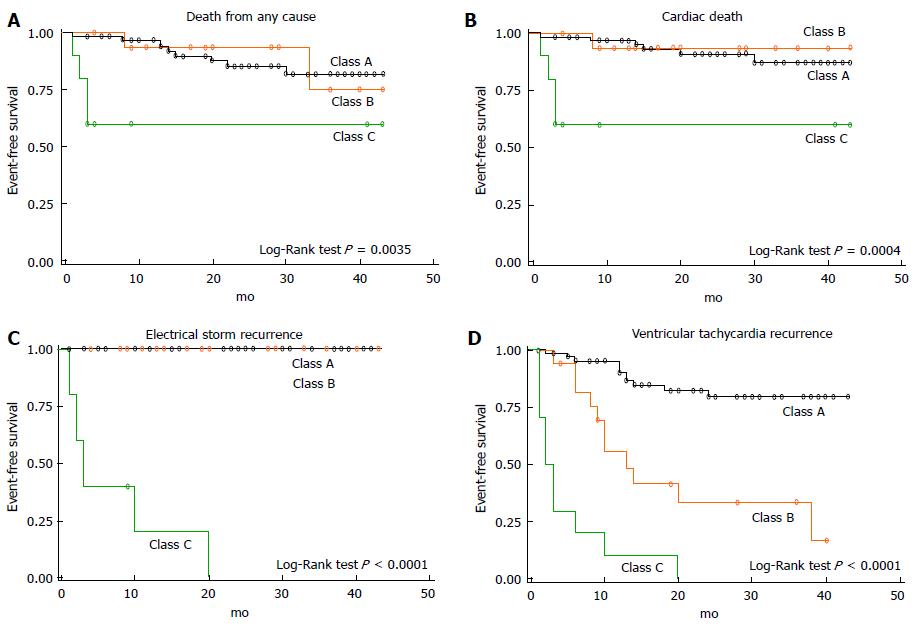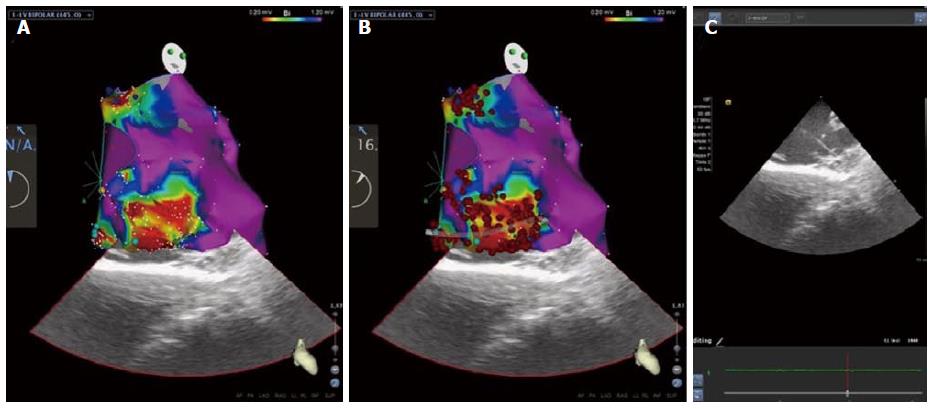Copyright
©The Author(s) 2015.
World J Cardiol. Sep 26, 2015; 7(9): 555-561
Published online Sep 26, 2015. doi: 10.4330/wjc.v7.i9.555
Published online Sep 26, 2015. doi: 10.4330/wjc.v7.i9.555
Figure 1 Kaplan-Meier survival analysis after catheter ablation of electrical storm.
Class A indicates catheter ablation success, defined as suppression of each ventricular tachycardia (VT) morphology; Class B indicates partial success, defined as suppression of each clinical VT; Class C indicates failure, defined as persistence of one or more clinical VT (reprinted from Carbucicchio et al[20]).
Figure 2 Modern approach of mapping and ablation for the treatment of electrical storm: High-density electroanatomical mapping of the left ventricle using CARTOSOUND contact-force technology (Biosense Webster, Diamond Bar, CA, United States).
A: Two distinct peri-valvular scars, in the mitro-aortic continuity and below the mitral annulus, in the setting of idiopathic cardiomyopathy are visualized. Scars are characterized by dense scar (abnormal bipolar electrograms < 0.20 mV), surrounded by a border zone (0.20-1.20 mV) in which late potentials, are tagged (dark and light blue dots); B: Radiofrequency ablation lines are dragged for dechanneling and isolation of all proarhythmic sites; C: Intracardiac echocardiography imaging is aiming at substrate characterization and correct positioning of the catheter during mapping and ablation.
- Citation: Conti S, Pala S, Biagioli V, Giorno GD, Zucchetti M, Russo E, Marino V, Russo AD, Casella M, Pizzamiglio F, Catto V, Tondo C, Carbucicchio C. Electrical storm: A clinical and electrophysiological overview. World J Cardiol 2015; 7(9): 555-561
- URL: https://www.wjgnet.com/1949-8462/full/v7/i9/555.htm
- DOI: https://dx.doi.org/10.4330/wjc.v7.i9.555














